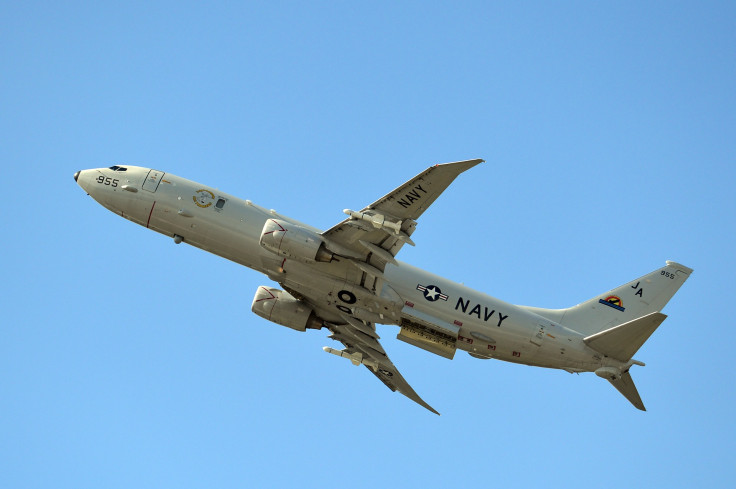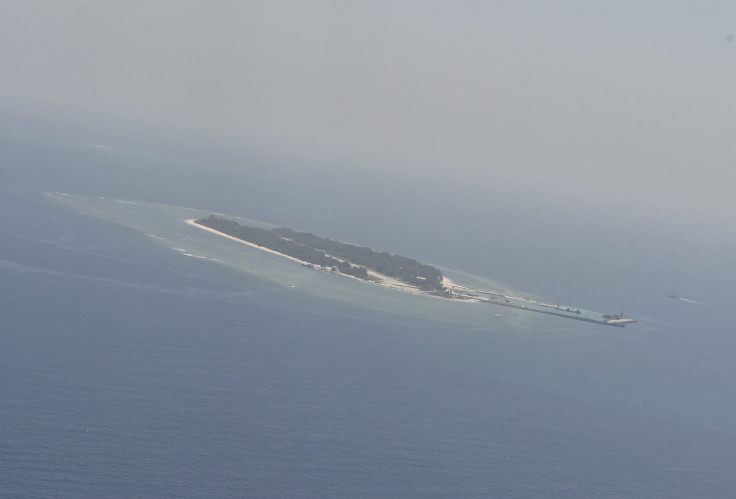South China Sea Controversy: US Navy Jet Warned By China, 'Leave Immediately'

While getting a rare view of one of the most disputed areas in the South China Sea, on Friday, a U.S. reconnaissance plane received six different warnings from the Chinese military, telling its crew to leave the area as soon as possible.
The warnings were received by the U.S. Navy P-8A Poseidon, when it flew above the four artificial islands on the South China Sea, occupied by China — Subi Reef, Fiery Cross Reef, Johnson Reef and Mischief Reef.
"U.S. military aircraft, this is China ... leave immediately and keep out to avoid any misunderstanding," a voice said.
And to every warning, the U.S. navy crew responded in the same manner. "I am a sovereign immune United States naval aircraft conducting lawful military activities beyond the national airspace of any coastal state," the response said. "In exercising these rights as guaranteed by international law, I am operating with due regard for the rights and duties of all states."
CNN was aboard the jet, when it was flying at an altitude of 16,500 feet over the low-lying coral which had been transformed into garrisons with five-story building structures, huge radar installations, power plants and airport runways, big enough to support the weight of a military aircraft — all signs of the Chinese government's rapidly expanding militarization of the South China Sea.
Poseidon’s sensors picked up the presence of 86 vessels on the Subi Reef including Chinese coast guard ships, moored in a giant lagoon. On the Fiery Cross Reefs, Lt. Lauren Callen, who was leading the air combat crew on the flight, was astonished to discover rows of airport hangers lining a long runway.
“It was surprising to see airports in the middle of the ocean," Callen said.
In other news, China's Shanghai Maritime Safety Administration announced on Aug. 10 that the Chinese navy will carry out a major military exercise in the Yellow Sea between Aug. 10 and 13.
Vessels and the public were told to stay clear of the east of Qingdao from 6.00 p.m. local time (6 a.m. EDT), when the drills were supposed to begin, Taiwan News reported.
Incidentally, the drills, which are supposed to start over an area of more than 13,000 square kilometers, was scheduled to take place on the same day Taiwan President Tsai Ing-wen is to begin his overseas journey. This was reportedly not a coincidence as back in April, China launched five fire drills in the Taiwan Strait as President Tsai visited eSwatini in Southern Africa.
Despite Chinese President Xi Jinping promising former President Barack Obama in 2015 that the Chinese government would not be militarizing the artificial islands, China has continued to fortify the artificial islands, even reportedly placing missiles on the Spratly island chain in April, during naval exercises.
It is estimated that Beijing’s present dominance over the South China Sea — which spans over 1.4 million square miles and has overlapping claims from countries like Vietnam, the Philippines, Taiwan, Indonesia and Malaysia — expands over 620 miles from its southernmost province, which is Hainan.

© Copyright IBTimes 2025. All rights reserved.






















